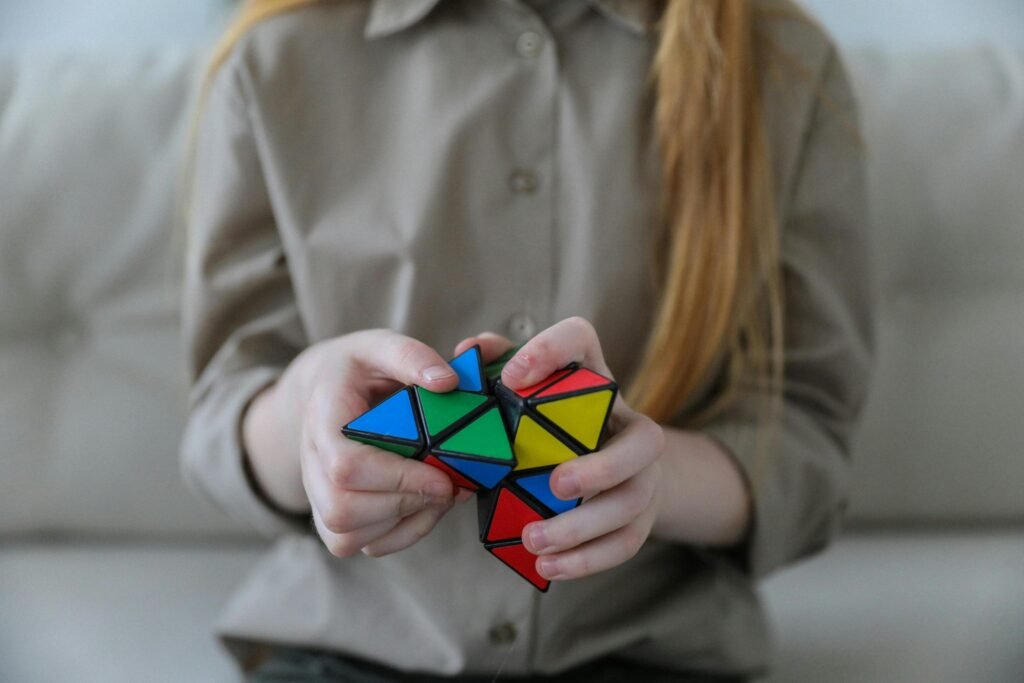How to Solve a Puzzle: A Step-by-Step Guide for Puzzle Enthusiasts
Puzzles are a delightful challenge for people of all ages. Whether it’s a jigsaw puzzle, a Sudoku grid, a crossword, or a brain-teasing riddle, solving puzzles offers numerous benefits, from enhancing problem-solving skills to improving memory and cognitive function. But for many, puzzles can also be frustrating and time-consuming. If you’re looking to boost your puzzle-solving abilities, this guide provides practical strategies and tips to help you approach any puzzle with confidence.
Why Solving Puzzles is Good for You : How to Solve a Puzzle
Before diving into the strategies, let’s take a quick look at why solving puzzles is beneficial:
- Boosts Memory and Cognitive Skills: Puzzles improve short-term memory, concentration, and attention to detail.
- Enhances Problem-Solving Abilities: Puzzles train the mind to approach problems creatively and logically.
- Reduces Stress: Many find puzzles relaxing and a great way to reduce stress, making them an ideal break from daily routines.
- Encourages Perseverance: Solving a complex puzzle requires patience, determination, and the ability to tackle challenges.
Now, let’s explore some helpful methods for tackling different types of puzzles, from jigsaw puzzles to logical conundrums. How to Solve a Puzzle
Step-by-Step Guide to Solving Puzzles : How to Solve a Puzzle
1. Understand the Puzzle Type and Rules
The first and most important step in solving any puzzle is to understand the type of puzzle you’re working on and the rules. Each puzzle type has unique requirements and challenges:
- Jigsaw Puzzle: A puzzle with interlocking pieces that, when connected, form a complete picture.
- Sudoku: A number-placement puzzle that requires filling a grid with numbers so that each row, column, and box contain unique values.
- Crossword Puzzle: A word-based puzzle where you solve clues to fill words horizontally and vertically within a grid.
- Logic Puzzle: A puzzle that requires deductive reasoning to find a solution, often in the form of word problems or riddles.
2. Create a Plan and Organize Your Workspace
Having a clear, organized workspace can make the puzzle-solving process smoother and more enjoyable. Here are a few tips to set up an efficient workspace: How to Solve a Puzzle
- Clear Your Space: Make sure you have a clean, well-lit area to work on the puzzle. This helps keep you focused and minimizes distractions.
- Organize the Pieces: If it’s a jigsaw puzzle, consider sorting pieces by color, edge pieces, or unique patterns. For a Sudoku puzzle, use pencil marks to keep track of possible numbers in each square.
3. Start with the Easy Parts First
Starting with the easiest parts of the puzzle can build momentum and help you make progress quickly.
- Jigsaw Puzzles: Begin by finding and connecting the edge pieces to form the border, giving you a frame for the rest of the puzzle.
- Sudoku: Fill in numbers that are obvious or have only one possible solution, as this will narrow down the options for other squares.
- Crosswords: Solve the clues you know for sure, especially short words or familiar phrases, and build from there.
- Logic Puzzles: Identify statements that provide clear information, which can help eliminate possibilities and simplify complex relationships.
4. Use the Process of Elimination
For many puzzles, the process of elimination is key to finding the correct answer: How to Solve a Puzzle
- Sudoku: If you’re unsure of a number, pencil in potential options in each square. As you fill in other parts of the grid, eliminate numbers that are no longer possible.
- Logic Puzzles: Use a checklist or table to track which options are possible. Cross out incorrect possibilities to narrow down the correct answer.
- Crosswords: Use known letters from other words to eliminate wrong guesses for unsolved clues.
5. Work on Sections Independently
Breaking the puzzle down into manageable sections can help make progress feel more attainable. How to Solve a Puzzle
- Jigsaw Puzzles: Work on smaller sections based on colors or patterns. Once a section is complete, attach it to other completed parts.
- Crosswords: Focus on smaller sections or “mini-puzzles” within the larger grid, such as solving one quadrant at a time.
- Logic Puzzles: Tackle each clue individually to see what information you can deduce from each part before moving on to the next.
6. Look for Patterns and Repetition
Patterns can often reveal a path forward, especially in number-based or logic puzzles.
- Sudoku: Watch for patterns in numbers and placement rules. Recognizing patterns in rows, columns, and boxes can reveal missing numbers.
- Logic Puzzles: Look for recurring themes or phrases that suggest certain relationships, such as “only,” “if,” and “when.”
- Crosswords: Check for common crossword patterns, like plural endings or commonly used suffixes and prefixes.
7. Take Breaks to Clear Your Mind
Puzzle-solving can become overwhelming, especially with complex challenges. Taking short breaks can help you return to the puzzle with a fresh perspective.
Studies show that breaks improve focus and may lead to “aha!” moments when you approach a puzzle from a new angle. So, if you’re stuck, walk away for a few minutes, and then try again.
Advanced Tips and Techniques for Puzzle-Solving : How to Solve a Puzzle
Once you’ve mastered the basics, here are some advanced strategies for tackling more challenging puzzles.
1. Use Trial and Error Wisely
When you’re unsure of a solution, sometimes testing an answer and seeing if it works can be a useful strategy. But remember to use trial and error sparingly:
- Mark Tentative Answers: In pencil-based puzzles like Sudoku, mark uncertain answers lightly. If they don’t work out, you can erase them without confusion.
- Logical Hypotheses: If a logic puzzle has multiple possible solutions, make an educated guess and follow the chain of reasoning. If it leads to a contradiction, you know to try a different path.
2. Cross-Referencing Clues
In puzzles with interconnected elements, cross-referencing can be very helpful: How to Solve a Puzzle
- Crosswords: Use letters from solved words to solve clues that intersect.
- Logic Puzzles: Revisit clues periodically to see if new information helps clarify earlier clues.
3. Use Visualization and Imagination
For visual puzzles, mentally arranging pieces or imagining possibilities can reveal hidden solutions.
- Jigsaw Puzzles: If you’re working on a large puzzle, visualize where certain patterns or colors might fit.
- Riddles and Brain Teasers: Sometimes imagining the problem in a real-world scenario can make it easier to solve.
Frequently Asked Questions (FAQs) : How to Solve a Puzzle
1. What’s the best strategy for solving jigsaw puzzles? How to Solve a Puzzle?
Start by organizing the pieces, then complete the border. Next, work on specific sections based on color or pattern. Group similar pieces and build one area at a time.
2. How do I get better at solving puzzles?
Practice is key to improving puzzle-solving skills. Start with easier puzzles and gradually move to more challenging ones. Using a systematic approach, taking breaks, and working on focus can also help.
3. Can solving puzzles improve my mental abilities?
Yes, puzzles improve cognitive skills, memory, and problem-solving abilities. Regular puzzle-solving can also reduce stress and improve concentration.
4. How do I approach puzzles that seem too complex? How to Solve a Puzzle ?
Break the puzzle into smaller parts, solve what you can, and then build on it. Use tools like process of elimination and pattern recognition, and don’t hesitate to take breaks when needed.
5. Are there any apps that help improve puzzle-solving skills?
Yes, there are many apps designed to enhance puzzle-solving skills, including Lumosity, Peak, and Brainwell, which offer a variety of logic, memory, and reasoning puzzles to practice daily.
Conclusion : How to Solve a Puzzle
Solving puzzles can be a rewarding and enriching activity. Whether you’re working on a jigsaw puzzle, a crossword, or a complex logic puzzle, following a structured approach can help make the process more enjoyable and less overwhelming. Use the tips and techniques above to tackle any puzzle with confidence and patience, and watch as your skills improve over time.
Puzzles aren’t just a test of intellect – they’re also a fantastic way to relax, focus, and engage your mind in new ways. So, the next time you sit down with a challenging puzzle, remember these strategies and enjoy the journey to solving it! How to Solve a Puzzle .
Also Read: Top AI Tools for Business Growth in 2024




[…] Also Real : How to Solve a Puzzle: A Step-by-Step Guide for Puzzle Enthusiasts in 2025 […]
[…] Also Read : How to Solve a Puzzle: A Step-by-Step Guide for Puzzle Enthusiasts in 2025 […]